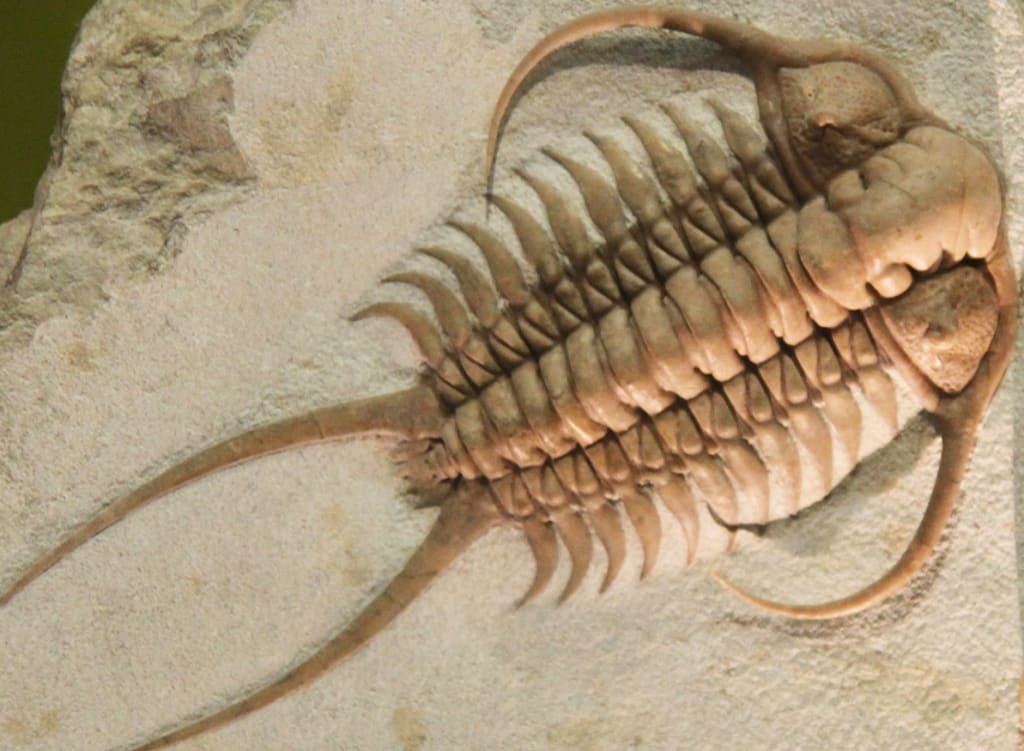An Environmental Horror Story
The Permian mass extinction, 252 million years ago, has lessons for today.

In a paper just published in Nature, Hana Jurikova from the Center of Ocean Research in Kiel, Germany, and colleagues detail a global catastrophe a quarter billion years ago that resulted in the extinction of about 70 percent of land life and 95 percent of life in the ocean. Even insects were hit hard, with many whole orders in that class becoming extinct. Current lines of evidence indicate that the trigger was not a meteorite impact, but huge amounts of lava being extruded in Siberia over tens of thousands of years—during which time enormous amounts of greenhouse gases were pumped into Earth’s atmosphere.
Jurikova tracked the environmental effect of those gases by analyzing isotopes of boron, carbon, and oxygen in the shells of (now largely extinct) clam-like organisms called brachiopods. The results were then plugged into a model, which allowed the authors to reconstruct the cascade of events that started with extreme volcanic activity in northern Asia at the end of the Permian time period 252 million years ago.
Carbon dioxide released from that activity resulted in the oceans becoming warmer and more acidic. Reef-building organisms couldn’t take the change and were the first organisms to go extinct. The higher temperatures also increased chemical weathering rates on land, which resulted, along with the mass die-off, in too many nutrients and organic material being released into the oceans. That in turn caused the spread of oxygen-depleted oceanic zones, which together with sulfide poisoning created a feed-back mechanism causing even more die-offs.
At times during this period, only a narrow zone in the upper water column remained oxygenated enough to support life. Everywhere else were “dead zones.” Interconnected cycles that sustained life collapsed in a domino-like pattern, both in the ocean and on land, which eventually led to the most severe mass extinction in the natural history of Earth—far worse than the one following an impact that killed off the (non-avian) dinosaurs 185 million years later.
The authors make an interesting comparison to today’s climate crisis. The peak annual releases of carbon dioxide 252 million years ago were 14 times less than the current annual releases from human-generated activities. The difference is that the release from the Siberian volcanoes lasted for about 60,000 years, while human-induced greenhouse releases have been happening over a much shorter time. But we already see similar effects, like the environmental stress and die-offs that reef-building corals are experiencing due to increasingly warmer and more acidic oceans.
To be sure, Earth’s biota as a whole did eventually recover from the Permian-Triassic catastrophe, although we lost many intriguing species forever. In fact, new reef-building organisms arose, with even more biomass and biodiversity. But given our situation today, one might wonder whether we really want to continue with our current rate of carbon emissions, and then wait a few million years while the planet recovers.
Jurikova tracked the environmental effect of those gases by analyzing isotopes of boron, carbon, and oxygen in the shells of (now largely extinct) clam-like organisms called brachiopods. The results were then plugged into a model, which allowed the authors to reconstruct the cascade of events that started with extreme volcanic activity in northern Asia at the end of the Permian time period 252 million years ago.
Carbon dioxide released from that activity resulted in the oceans becoming warmer and more acidic. Reef-building organisms couldn’t take the change and were the first organisms to go extinct. The higher temperatures also increased chemical weathering rates on land, which resulted, along with the mass die-off, in too many nutrients and organic material being released into the oceans. That in turn caused the spread of oxygen-depleted oceanic zones, which together with sulfide poisoning created a feed-back mechanism causing even more die-offs.
About the Creator
Mark Xavier
typing...






Comments
There are no comments for this story
Be the first to respond and start the conversation.